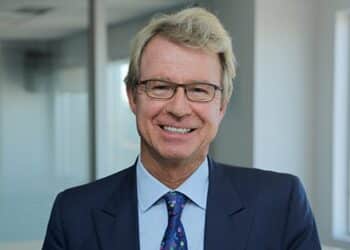The Invesco Global Sovereign Asset Management Study for 2025 has found that sovereign investors are facing a “fundamentally altered landscape” which has driven a renewed focus on fixed income flexibility, enhanced liquidity management and the “strategic elevation of private credit within the portfolio framework”.
The study also highlighted a “significant shift towards active management” in response to index concentration risks and the need for greater tactical flexibility in an increasingly fragmented world.
The study involved comprehensive interviews with 141 senior investment professionals, including chief investment officers, heads of asset classes and portfolio strategists from 83 sovereign wealth funds (SWF) and 58 central banks.
“This year’s study reveals a significant shift in how SWFs and central banks view the investment environment,” Invesco stated in the research report.
“Against the backdrop of President Trump’s tariff policies and broader fragmentation trends, respondents increasingly consider the combination of geopolitical tensions, interest rate unpredictability, and evolving asset relationships as longer-term structural conditions rather than temporary disruptions.”
The data from the survey indicates that over half of sovereign wealth funds plan to increase their active equity exposure over the next two years.
This pivot was especially pronounced among larger institutions, with 75 per cent of SWFs managing over US$100 billion reporting a move towards more active strategies within equities over the past two years, compared to 43 per cent of mid-sized funds and 36 per cent of smaller institutions, the report said.
The report noted that larger SFWs were to more easily pivot by building internal active management capabilities, while smaller institutions often face the added complexity of sourcing and onboarding specialised external managers to execute these strategies.
SWFs are increasingly viewing active strategies as tools for navigating complexity and building portfolio resilience in an environment where traditional market assumptions are being challenged, Invesco said.
One of the key catalysts for this shift is the increased concentration risk among major indices.
With a handful of large-cap technology companies now dominating index performance, the report said institutions were questioning the diversification that passive exposure is assumed to provide.
Invesco said the rise of regional economic blocs and shifting trade patterns is creating greater dispersion in market returns. This has pushed many sovereign wealth funds towards active strategies.
Macro and political volatility is also diminishing confidence in a one-size-fits-all beta exposure.
An Asian-based sovereign wealth fund commented in the survey that the next two years will “require more selectively”.
“Passive works when markets are predictable. That’s no longer the case,” the fund stated.
Invesco also noted that greater dispersion across markets, sectors and regions was also creating conditions where selective active management can add material value.
The survey indicated that 62 per cent of sovereign wealth funds agreed that active management was becoming more important due to market concentration. A similar proportion (61 per cent) also agreed that concentration of returns in a small number of mega-cap tech stocks presents significant portfolio risk.
“Across the SWF community, the shift towards greater active exposure is visible both in sentiment and in portfolio composition. On average, SWFs maintain over 70 per cent of their portfolios in active strategies across both fixed income and equities,” the report said.
“While passive exposure remains important, particularly in more efficient public markets, the emphasis on strategic adaptability has recently come to the fore.”
The report explained that as market concentration increases, correlations shift and geopolitical tensions reshape global capital flows, SWFs and central banks are recognising that traditional market-weighted passive exposures may introduce hidden vulnerabilities.
“Active management offers a potential path to more resilient portfolios,” it said.
“In this environment, the conversation is moving beyond the traditional active versus passive framing to focus on how different investment approaches can be strategically combined to achieve specific portfolio objectives.”






